Abstract
To test for linkage between a trait and a marker, one can consider identical marker alleles in related individuals, for instance, sibs. For recessive diseases, it has been shown that some information may be gained from the identity by descent (IBD) of the two alleles of an affected inbred individual at the marker locus. The aim of this paper is to extend the sib-pair method of linkage analysis to the situation of sib pairs sampled from consanguineous populations. This extension takes maximum advantage of the information provided by both the IBD pattern between sibs and allelic identity within each sib of the pair. This is possible through the use of the condensed identity coefficients. Here, we propose a new test of linkage based on a chi2. We compare the performance of this test with that of the classical chi2 test based on the distribution of sib pairs sharing 0, 1, or 2 alleles IBD. For sib pairs from first-cousin matings, the proposed test can better detect the role of a disease-susceptibility (DS) locus. Its power is shown to be greater than that of the classical test, especially for models where the DS allele may be common and incompletely penetrant; that is to say for situations that may be encountered in multifactorial diseases. A study of the impact of inbreeding on the expected proportions of sib pairs sharing 0, 1, or 2 alleles IBD is also performed here. Ignoring inbreeding, when in fact inbreeding exists, increases the rate of type I errors in tests of linkage.
Full text
PDF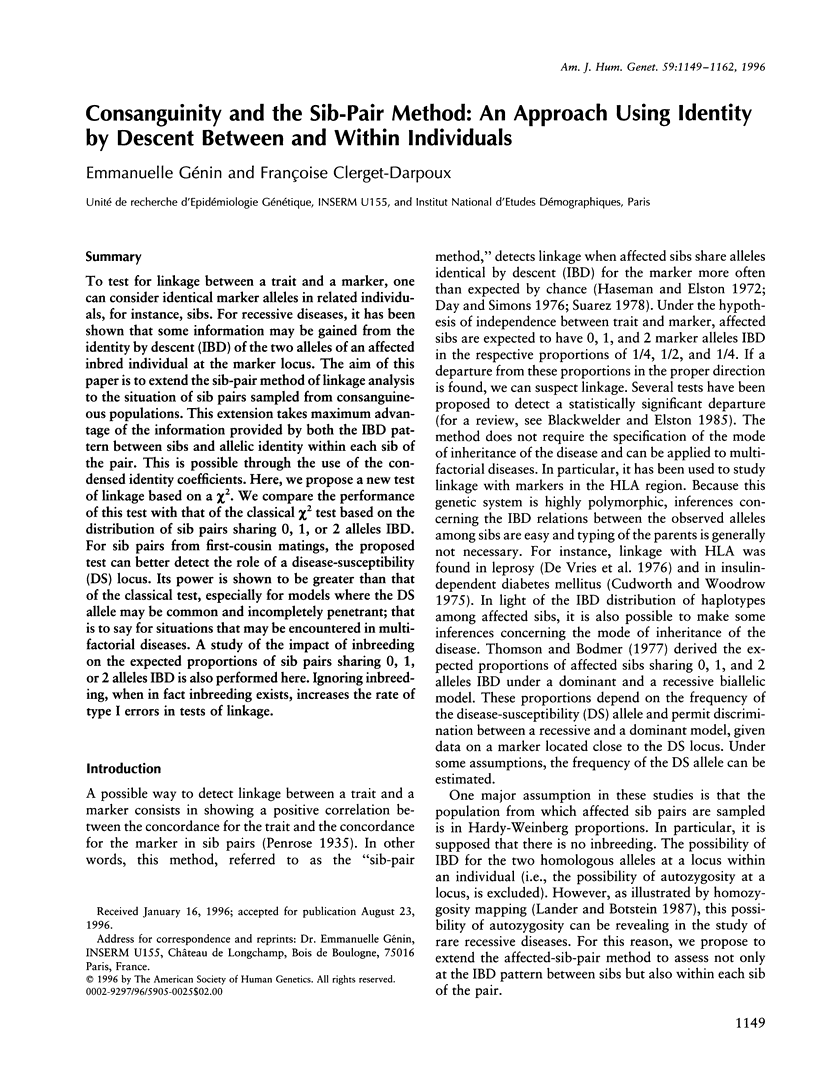

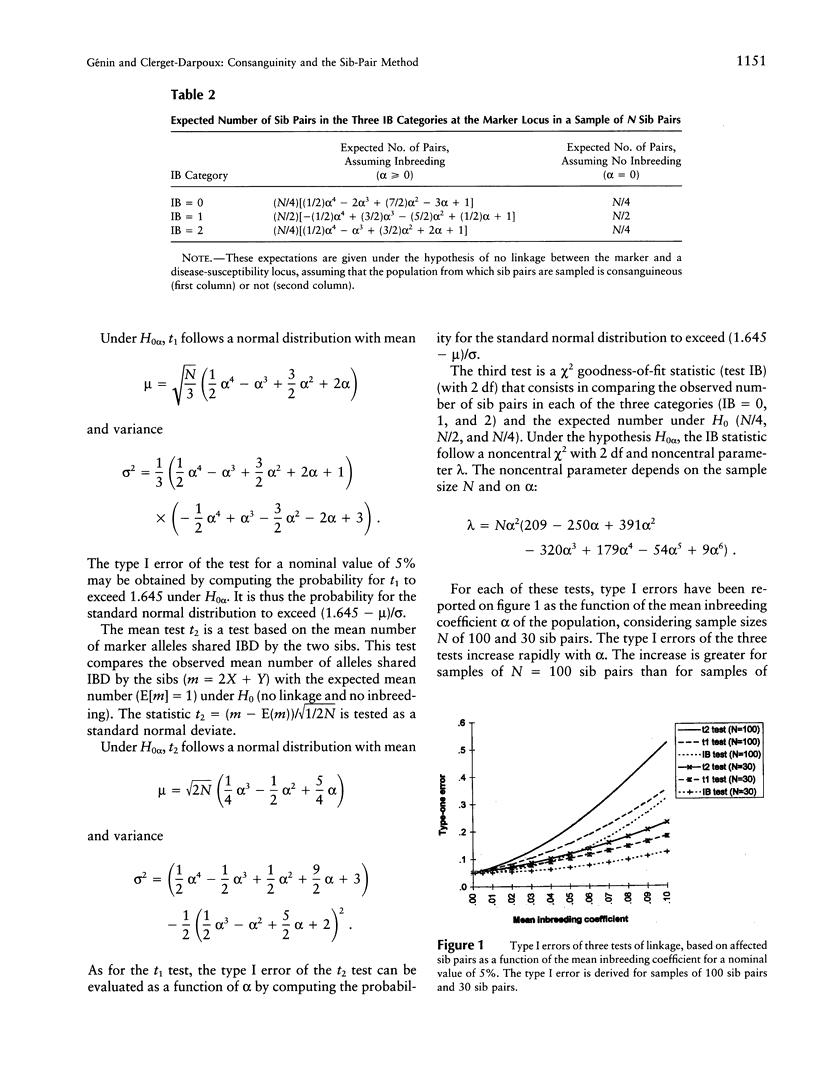
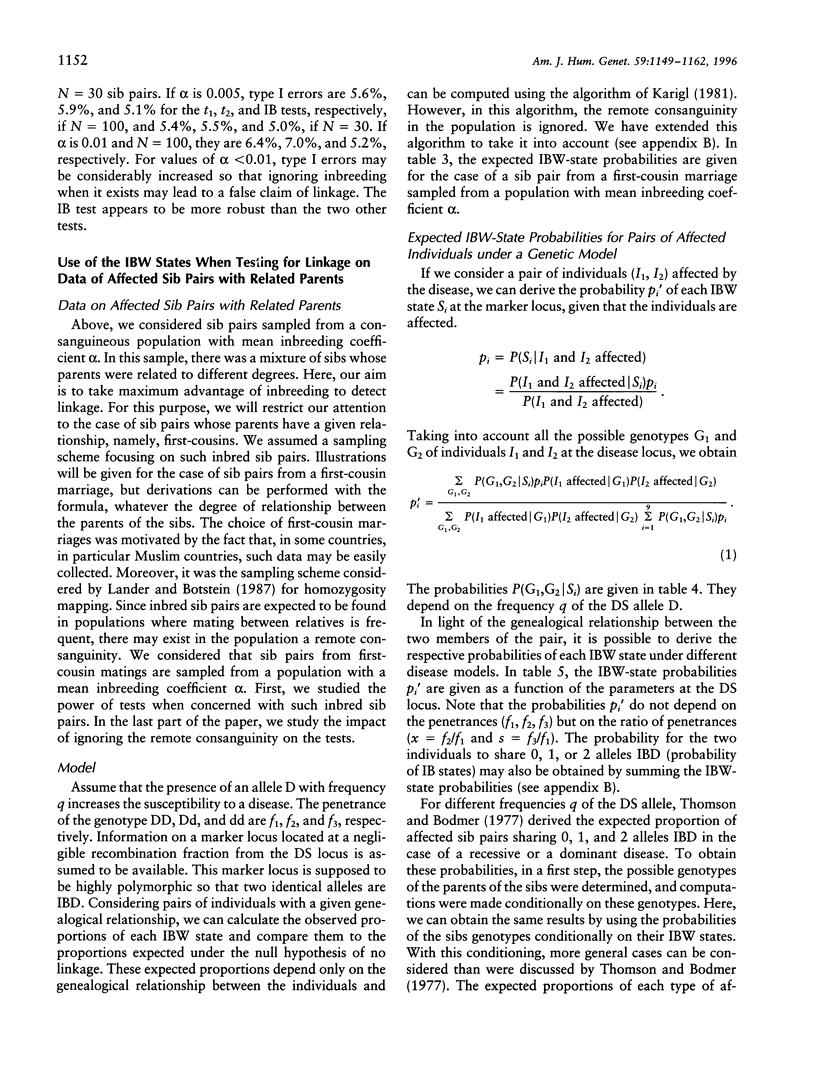
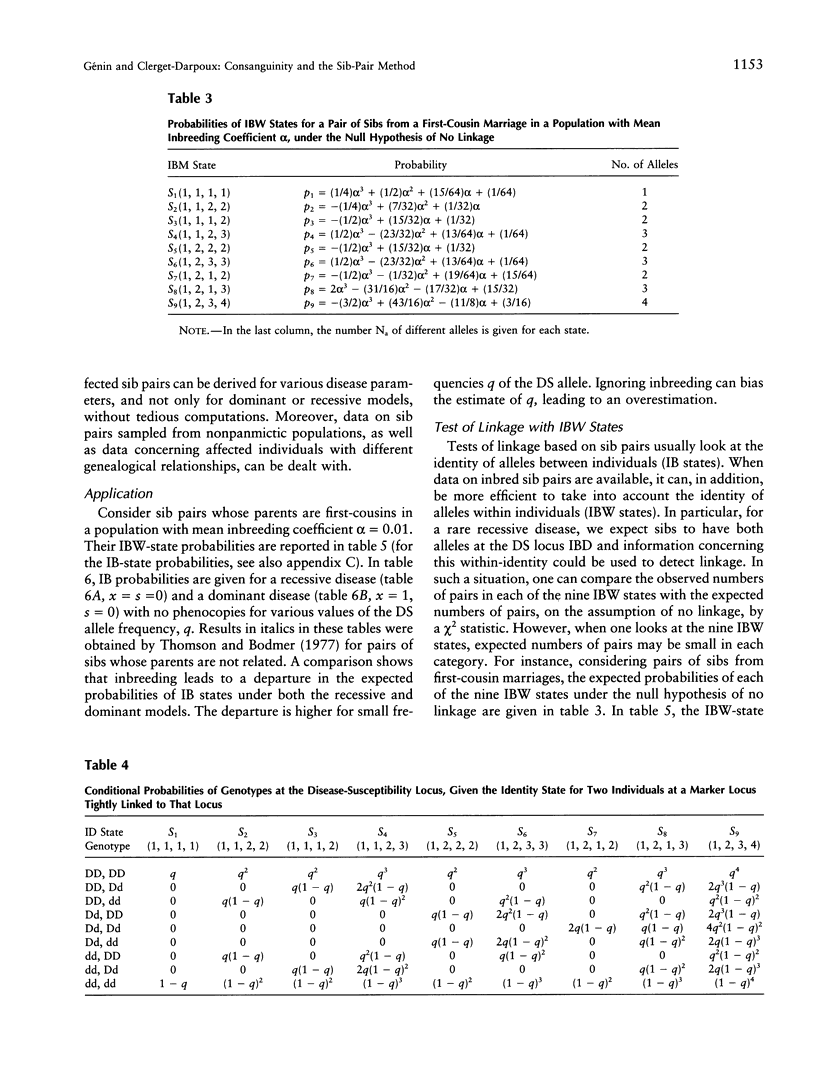
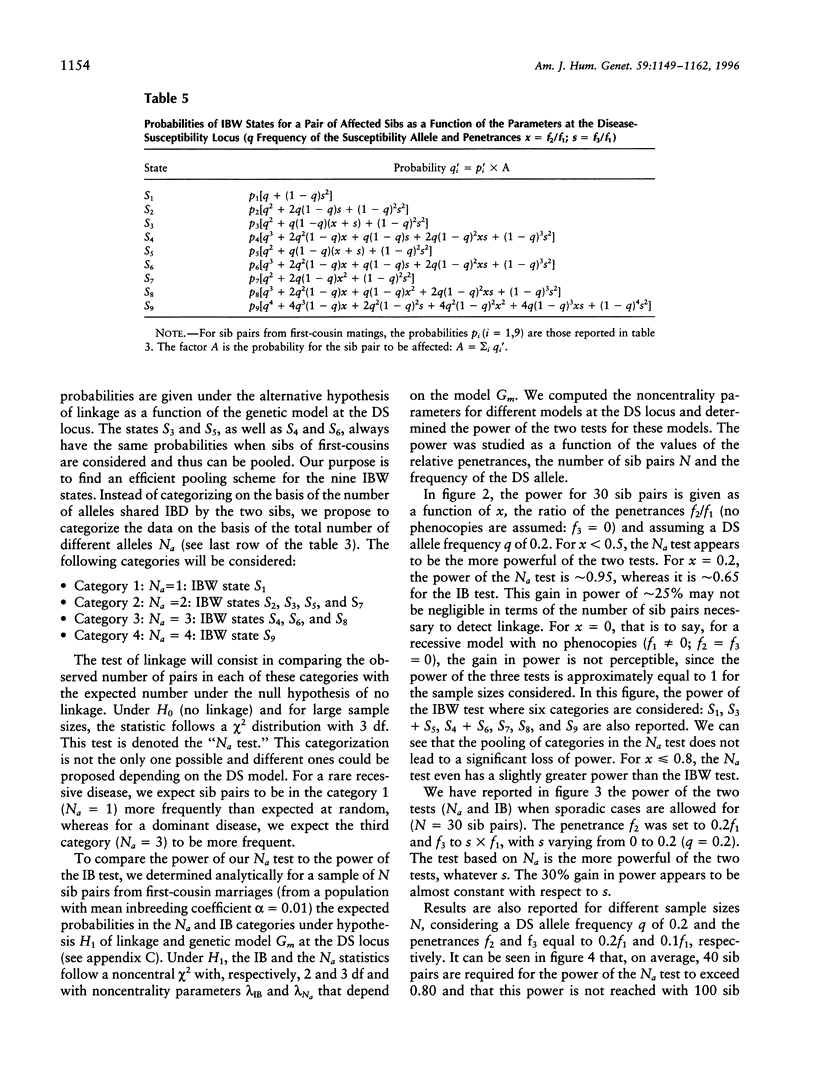

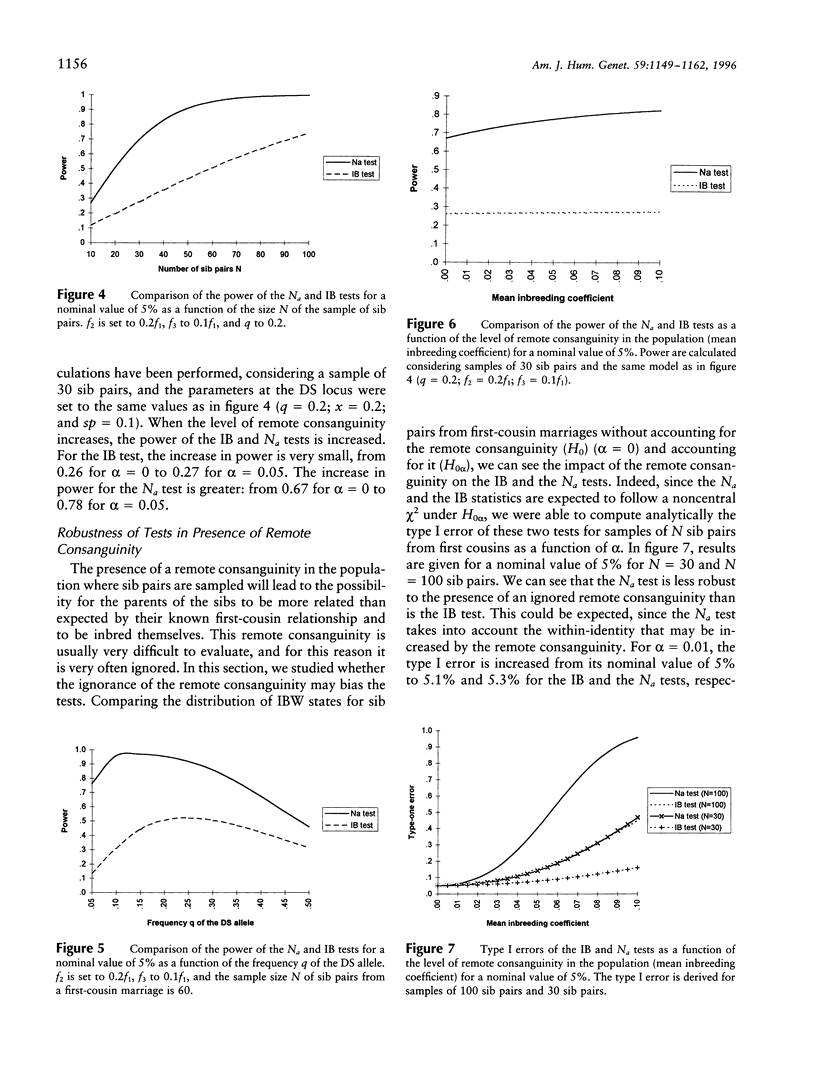


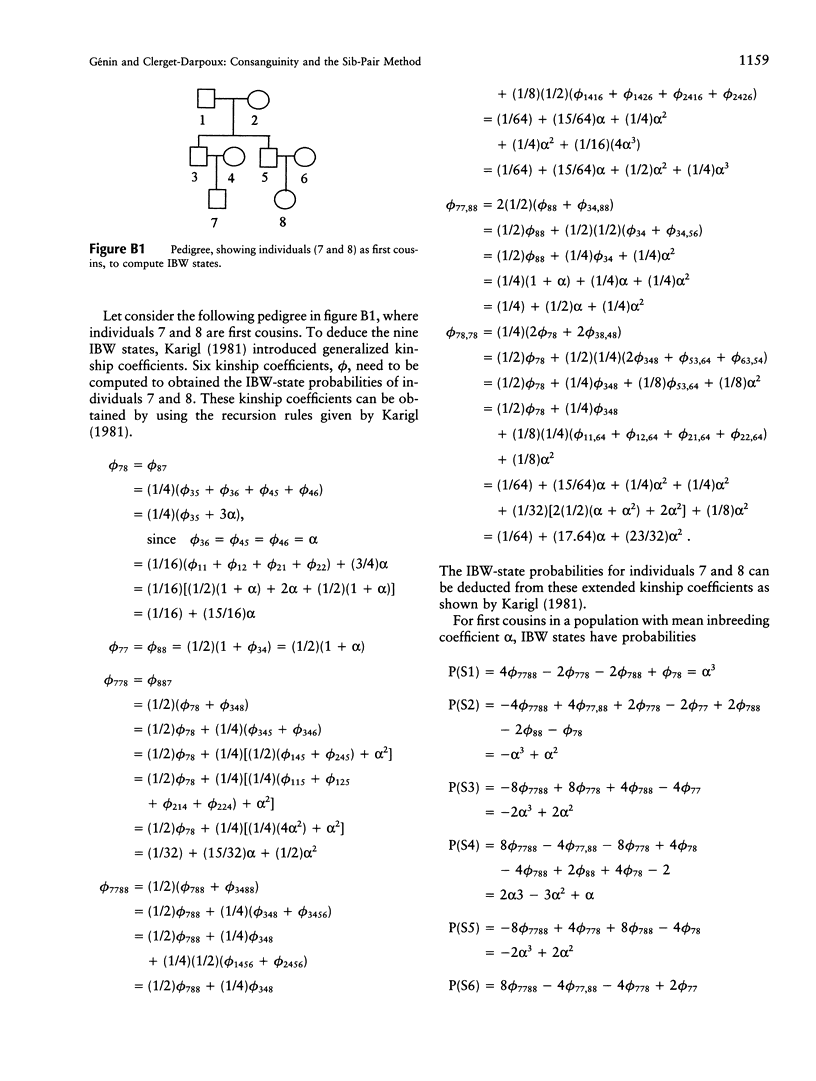
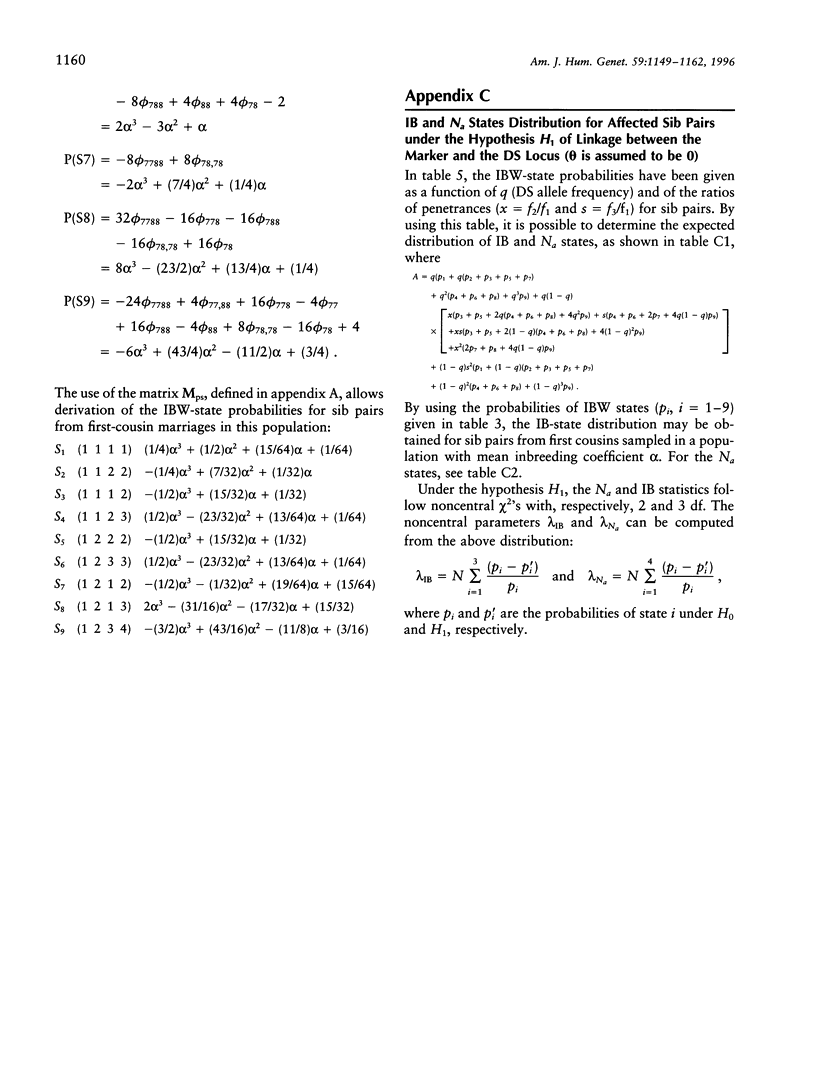
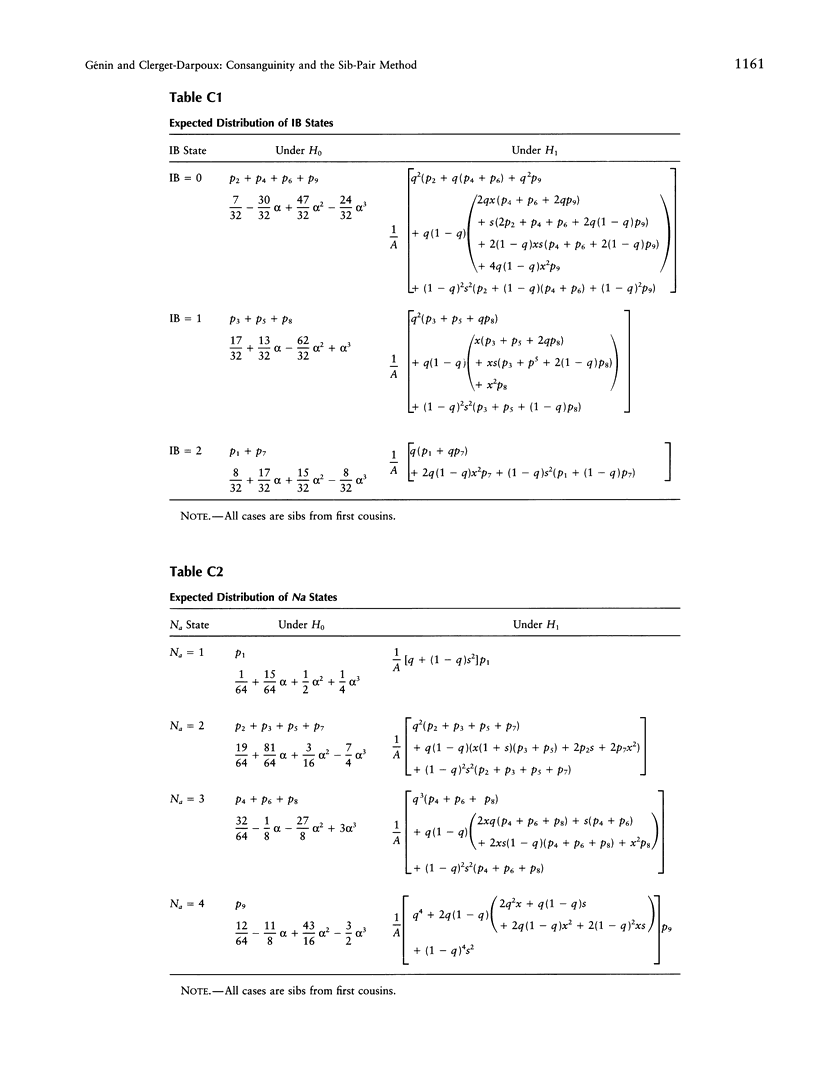
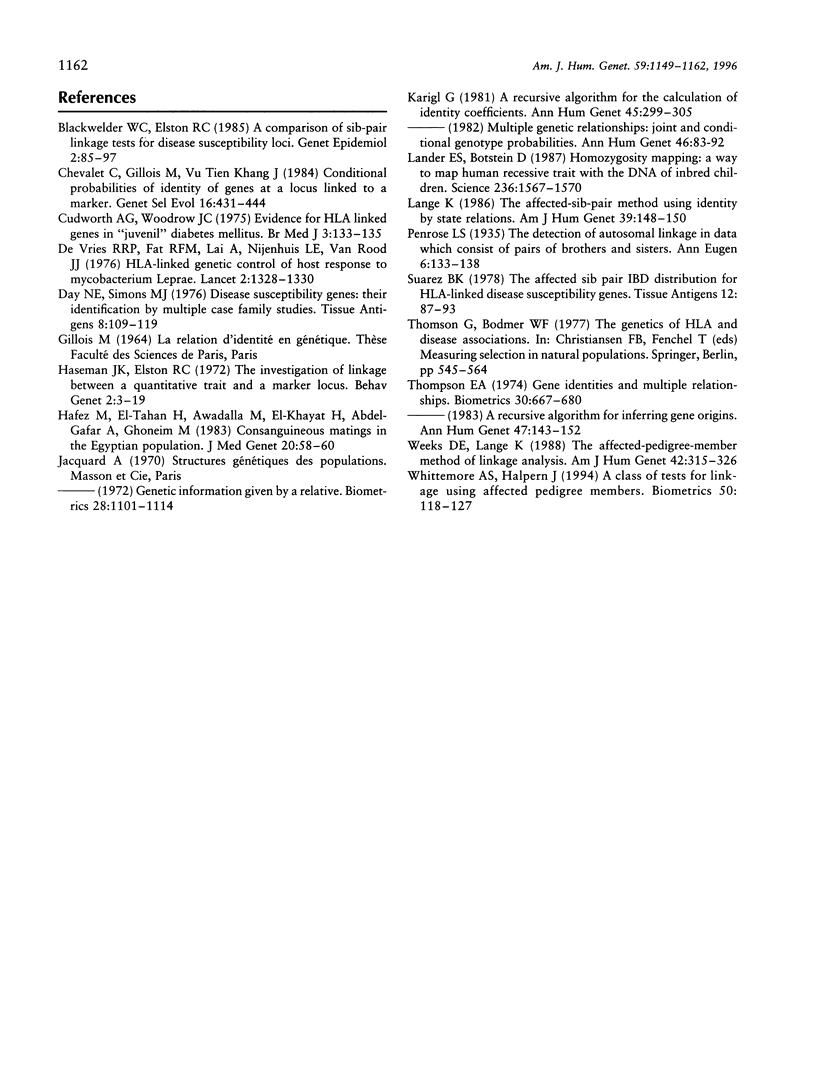
Selected References
These references are in PubMed. This may not be the complete list of references from this article.
- Blackwelder W. C., Elston R. C. A comparison of sib-pair linkage tests for disease susceptibility loci. Genet Epidemiol. 1985;2(1):85–97. doi: 10.1002/gepi.1370020109. [DOI] [PubMed] [Google Scholar]
- Cudworth A. G., Woodrow J. C. Evidence for HL-A-linked genes in "juvenile" diabetes mellitus. Br Med J. 1975 Jul 19;3(5976):133–135. doi: 10.1136/bmj.3.5976.133. [DOI] [PMC free article] [PubMed] [Google Scholar]
- Day N. E., Simons M. J. Disease susceptibility genes--their identification by multiple case family studies. Tissue Antigens. 1976 Aug;8(2):109–119. [PubMed] [Google Scholar]
- Hafez M., El-Tahan H., Awadalla M., El-Khayat H., Abdel-Gafar A., Ghoneim M. Consanguineous matings in the Egyptian population. J Med Genet. 1983 Feb;20(1):58–60. doi: 10.1136/jmg.20.1.58. [DOI] [PMC free article] [PubMed] [Google Scholar]
- Jacquard A. Genetic information given by a relative. Biometrics. 1972 Dec;28(4):1101–1114. [PubMed] [Google Scholar]
- Karigl G. A recursive algorithm for the calculation of identity coefficients. Ann Hum Genet. 1981 Jul;45(Pt 3):299–305. doi: 10.1111/j.1469-1809.1981.tb00341.x. [DOI] [PubMed] [Google Scholar]
- Lander E. S., Botstein D. Homozygosity mapping: a way to map human recessive traits with the DNA of inbred children. Science. 1987 Jun 19;236(4808):1567–1570. doi: 10.1126/science.2884728. [DOI] [PubMed] [Google Scholar]
- Lange K. The affected sib-pair method using identity by state relations. Am J Hum Genet. 1986 Jul;39(1):148–150. [PMC free article] [PubMed] [Google Scholar]
- Suarez B. K. The affected sib pair IBD distribution for HLA-linked disease susceptibility genes. Tissue Antigens. 1978 Aug;12(2):87–93. doi: 10.1111/j.1399-0039.1978.tb01303.x. [DOI] [PubMed] [Google Scholar]
- Thompson E. A. Gene identities and multiple relationships. Biometrics. 1974 Dec;30(4):667–680. [PubMed] [Google Scholar]
- Weeks D. E., Lange K. The affected-pedigree-member method of linkage analysis. Am J Hum Genet. 1988 Feb;42(2):315–326. [PMC free article] [PubMed] [Google Scholar]
- Whittemore A. S., Halpern J. A class of tests for linkage using affected pedigree members. Biometrics. 1994 Mar;50(1):118–127. [PubMed] [Google Scholar]
- de Vries R. R., Fat R. F., Nijenhuis L. E., van Rood J. J. HLA-linked genetic control of host response to Mycobacterium leprae. Lancet. 1976 Dec 18;2(7999):1328–1330. doi: 10.1016/s0140-6736(76)91975-9. [DOI] [PubMed] [Google Scholar]


